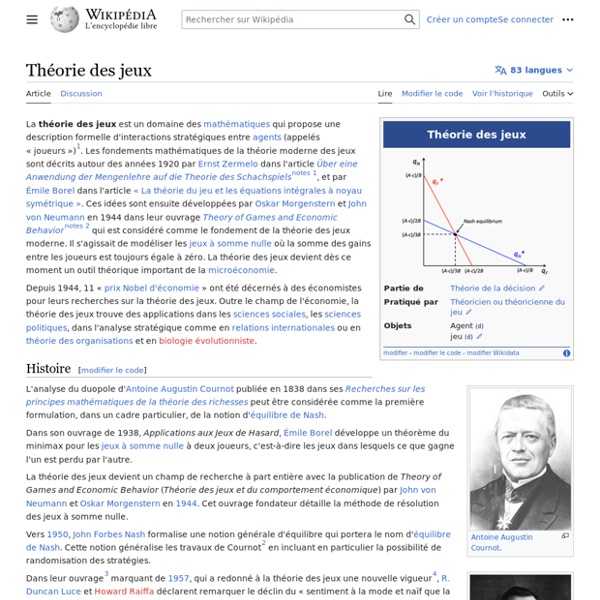



https://fr.wikipedia.org/wiki/Th%C3%A9orie_des_jeux
Related: Collaboration • ImitationTuring pattern Concept from evolutionary biology Three examples of Turing patterns Six states generating a Turing pattern The Turing pattern is a concept introduced by English mathematician Alan Turing in a 1952 paper titled "The Chemical Basis of Morphogenesis" which describes how patterns in nature, such as stripes and spots, can arise naturally and autonomously from a homogeneous, uniform state.[1] In his classic paper, Turing examined the behaviour of a system in which two diffusible substances interact with each other, and found that such a system is able to generate a spatially periodic pattern even from a random or almost uniform initial condition.[2] Turing hypothesized that the resulting wavelike patterns are the chemical basis of morphogenesis.[2] Turing patterning is often found in combination with others: vertebrate limb development is one of the many phenotypes exhibiting Turing overlapped with a complementary pattern (in this case French flag model).[3] Concept[edit]